On Saturday, Oct 6 and 7, the Greenwich Historical Society unveiled its new $12 million campus, which features a museum, library and archives, Artists’ Café, museum store and restored Impressionist-era gardens. The reimagined campus is the result of a capital campaign launched in 2015.
On both October 6-7, admission will be free, the site will be open 12:00-4:00pm, and all are welcome.

Subscribe to the daily Greenwich Free Press newsletter.
Architect David Scott Parker explained that what is now the museum Artists’ Café was formerly the hotel lobby. The hotel opened when the railroad connected New York City to Greenwich, people were able to escape the heat and stench of the city and enjoy “good air.”
“The city was dirty. They were still using coal at the time,” Parker said. “This was a getaway from the smell and pollution.”
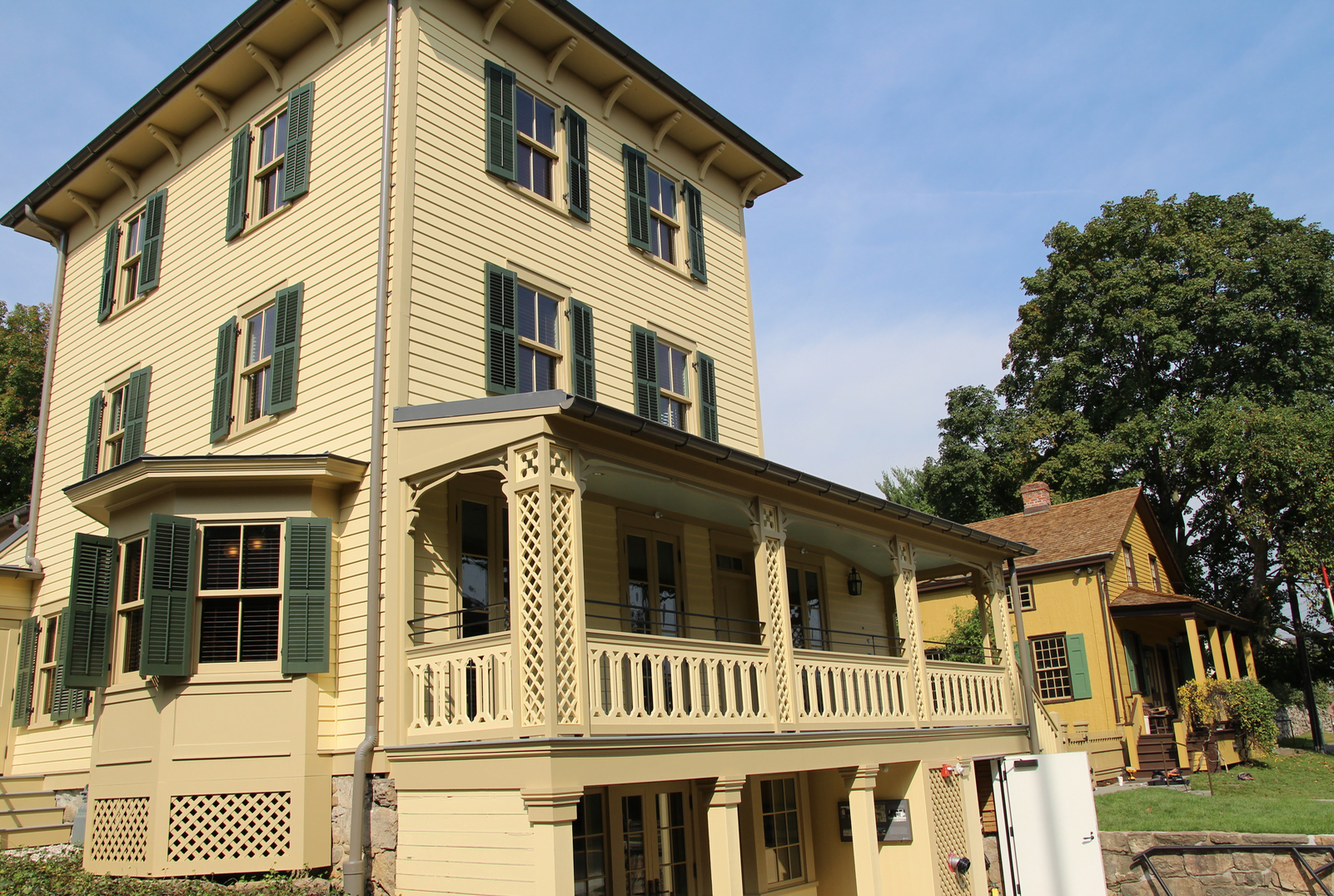
Restored to perfection, the Toby’s Tavern building includes a café with wifi and museum store.

In the Toby’s Tavern Building, the Artists’ café features wall paper from when the room served as the lobby of hotel in 1855. Photo: Leslie Yager

Architet David Scott Parker outside the Artists’ Café in the Toby’s Tavern building. Oct 4, 2018 Photo: Leslie Yager
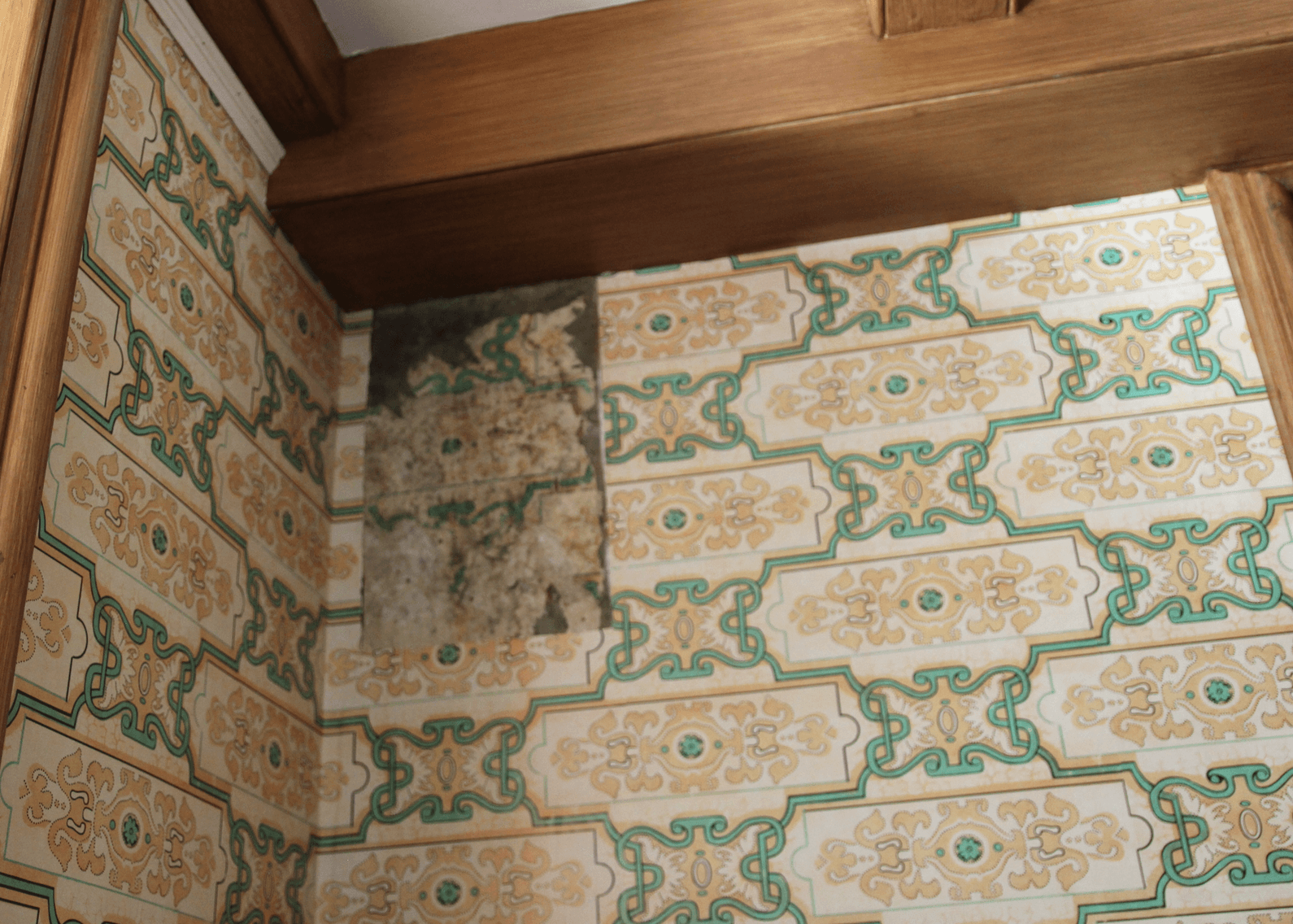
A small patch of the original hotel lobby wallpaper is visible in a corner of the museum café. Photo: Leslie Yager
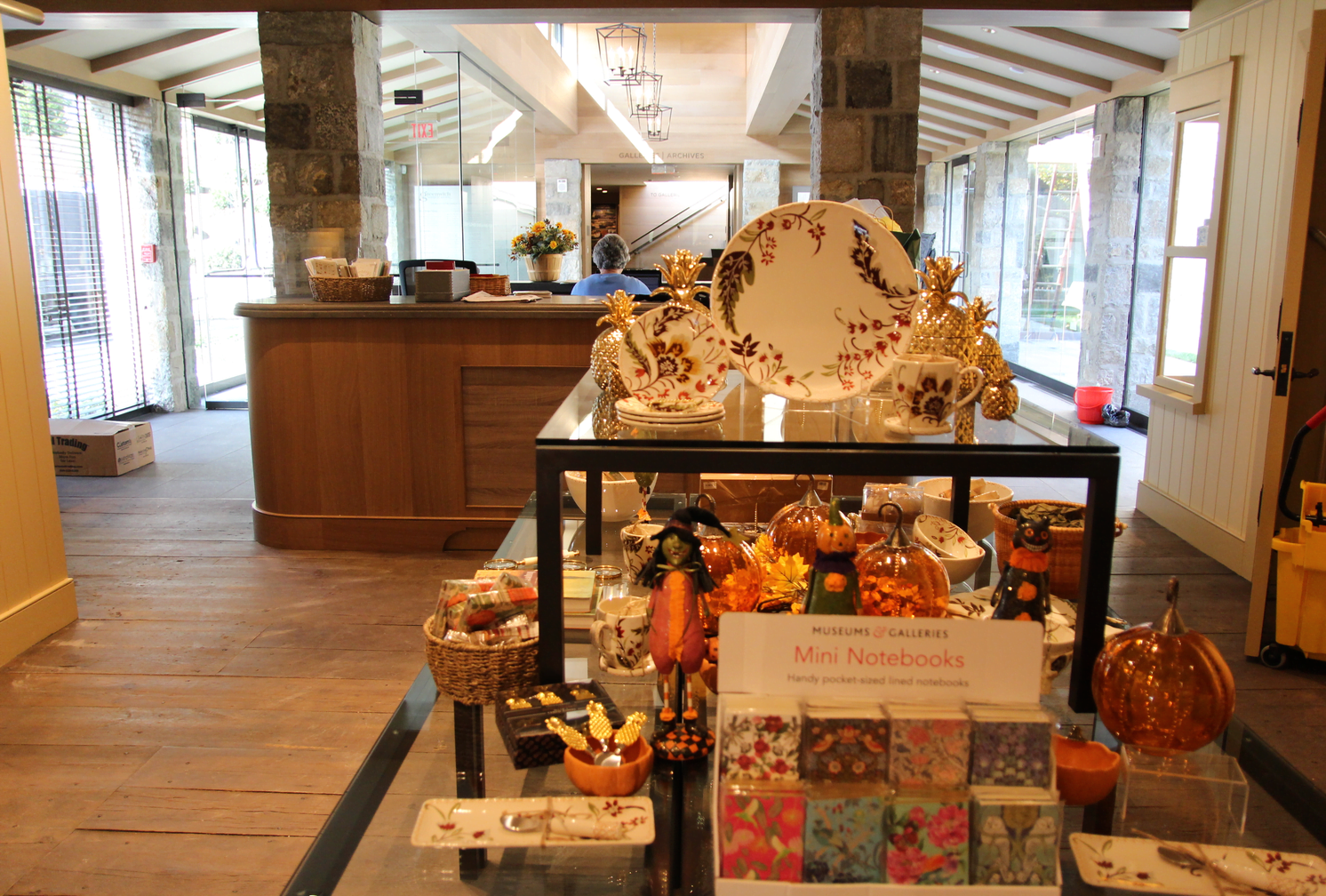
The museum store features many Greenwich-centric items. The store and café hours are Monday to Friday 9-5. Saturday and Sunday, 12:00 noon to 4:00pm.
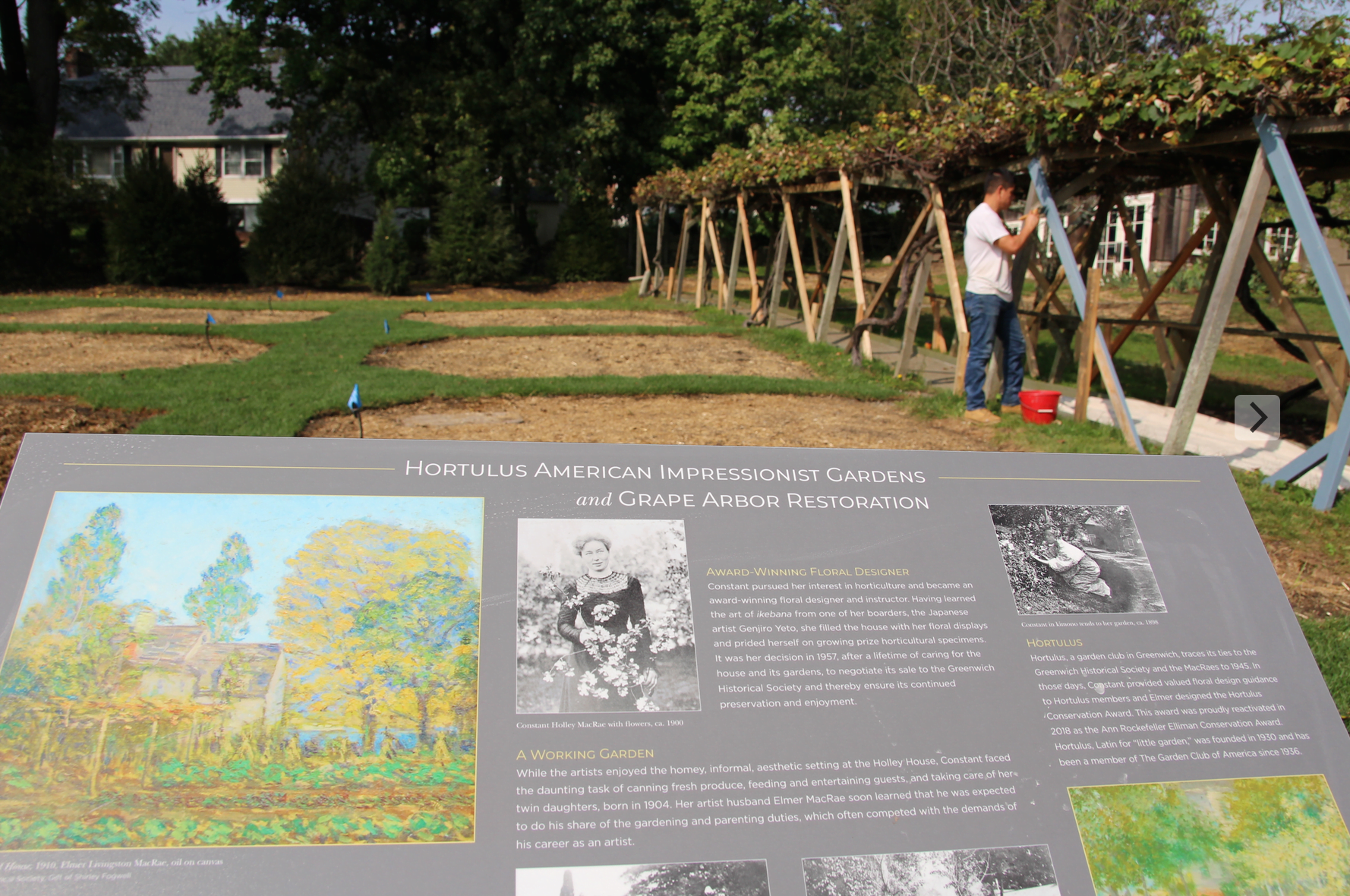
The original archives building was located beside the 120 year old grape arbor. The archives building was demolished and will be replaced with Impressionist Gardens. The period gardens will convey both daily life routines (growing food provisions for the residents), and recreate what inspired plein-air painters.
During the 30-year period from 1890 to 1920, Cos Cob and the Holley House (now Bush-Holley House) became the setting for Connecticut’s first art colony.
Today, Bush-Holley House visitors can view works by Impressionist artists depicting the house and gardens.
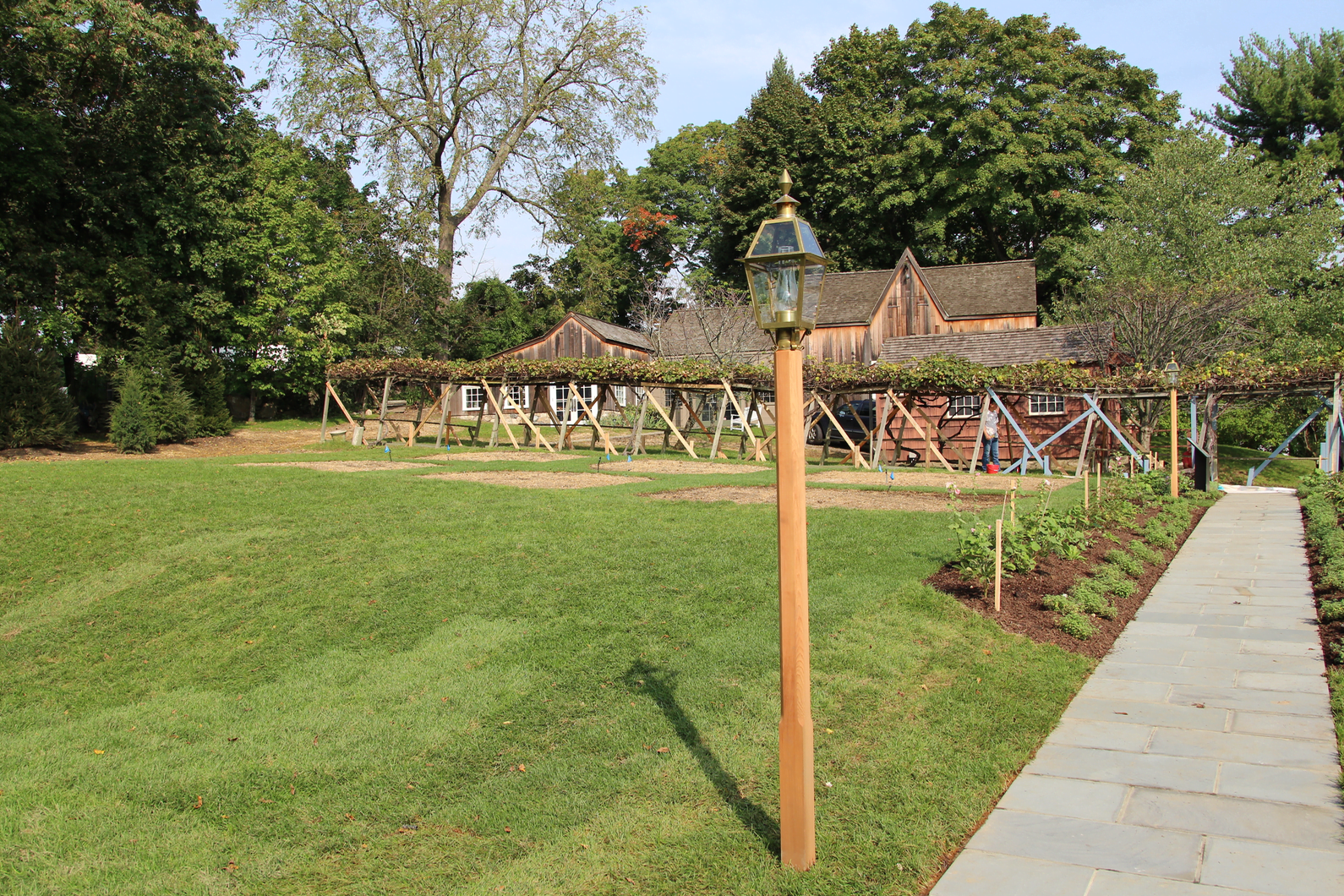
Hortulus, a local garden club, enabled the restoration of the ornamental flower gardens, kitchen gardens and grape arbor as part of the overall master plan.

Subscribe to the daily Greenwich Free Press newsletter.
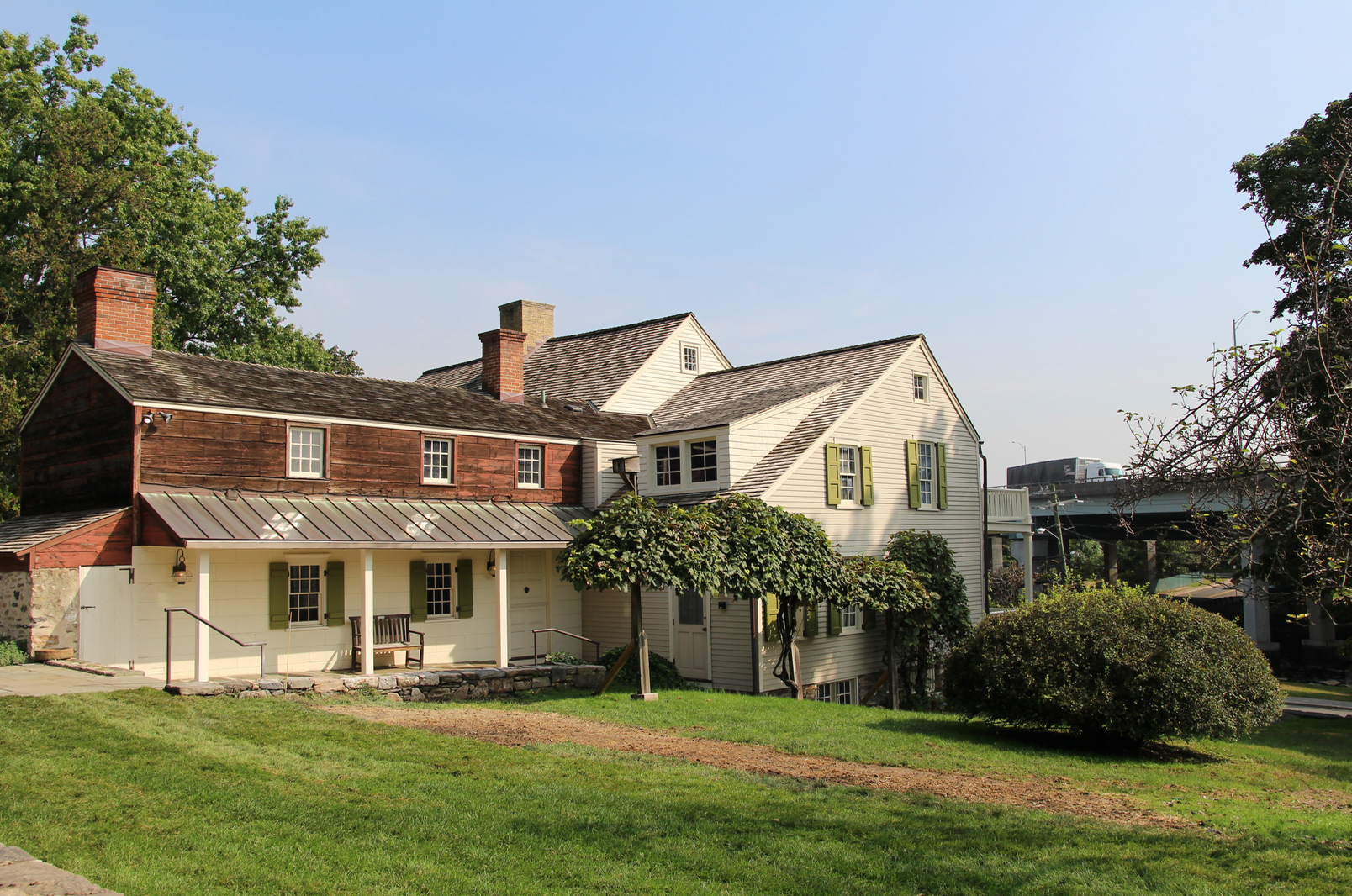
Side view of the Bush-Holley House. Garden improvements will include relocation and expansion of the Impressionist-era fruit and vegetable garden that supported the Holley boarding house and the creation of a new Impressionist-era perennial flower garden along both sides of the walkway that will link the new building to Bush-Holley House and the Vanderbilt Education Center. Photo: Leslie Yager
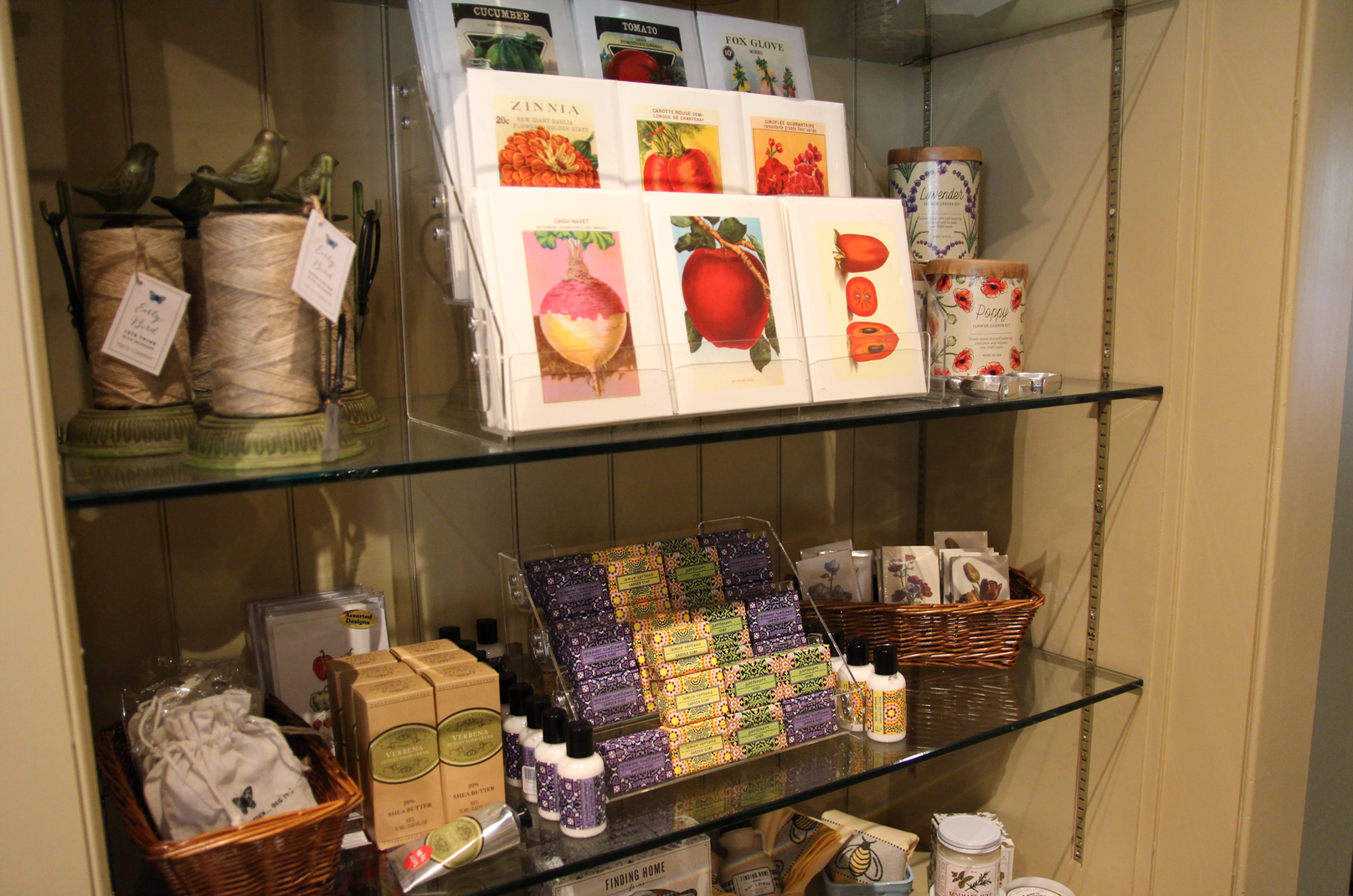
The Historical Society’s museum store features many Greenwich-centric items. Photo: Leslie Yager
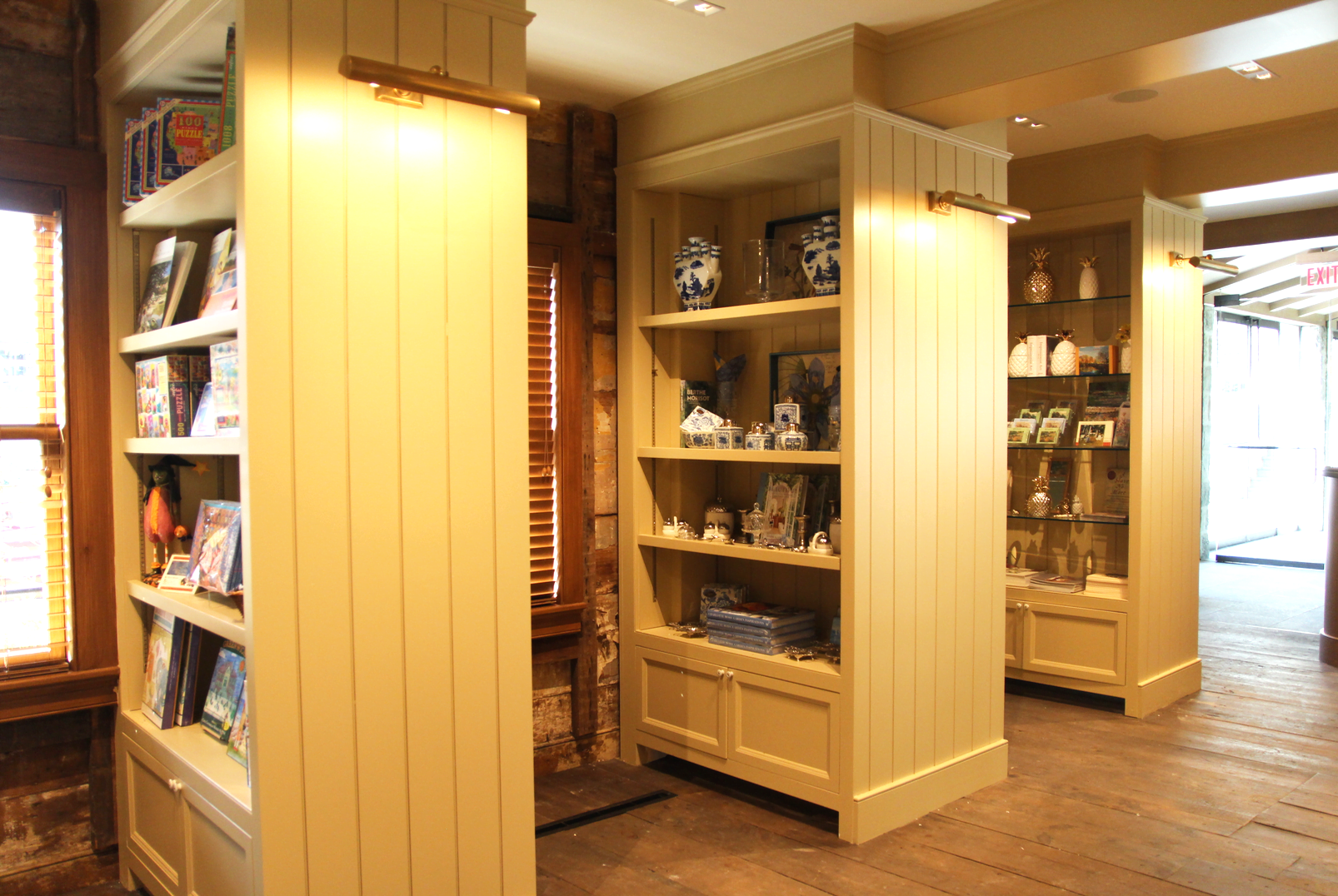
The Historical Society’s museum store features many Greenwich-centric items. Photo: Leslie Yager

The new archives and library are a key feature of the new Historical Society campus. Photo: Leslie Yager

Inside the archives vault, paintings are stored in rows that slide apart. Photo: Leslie Yager

Archivist Christopher Shields demonstrated how the vast rows of storage in the vault roll apart for access. The state of the art storage is temperature controlled and has much more square footage than the previous archives building. Photo: Leslie Yager

Archivist Christopher Shields demonstrated how the vast rows of storage in the vaults roll apart for access. Photo: Leslie Yager
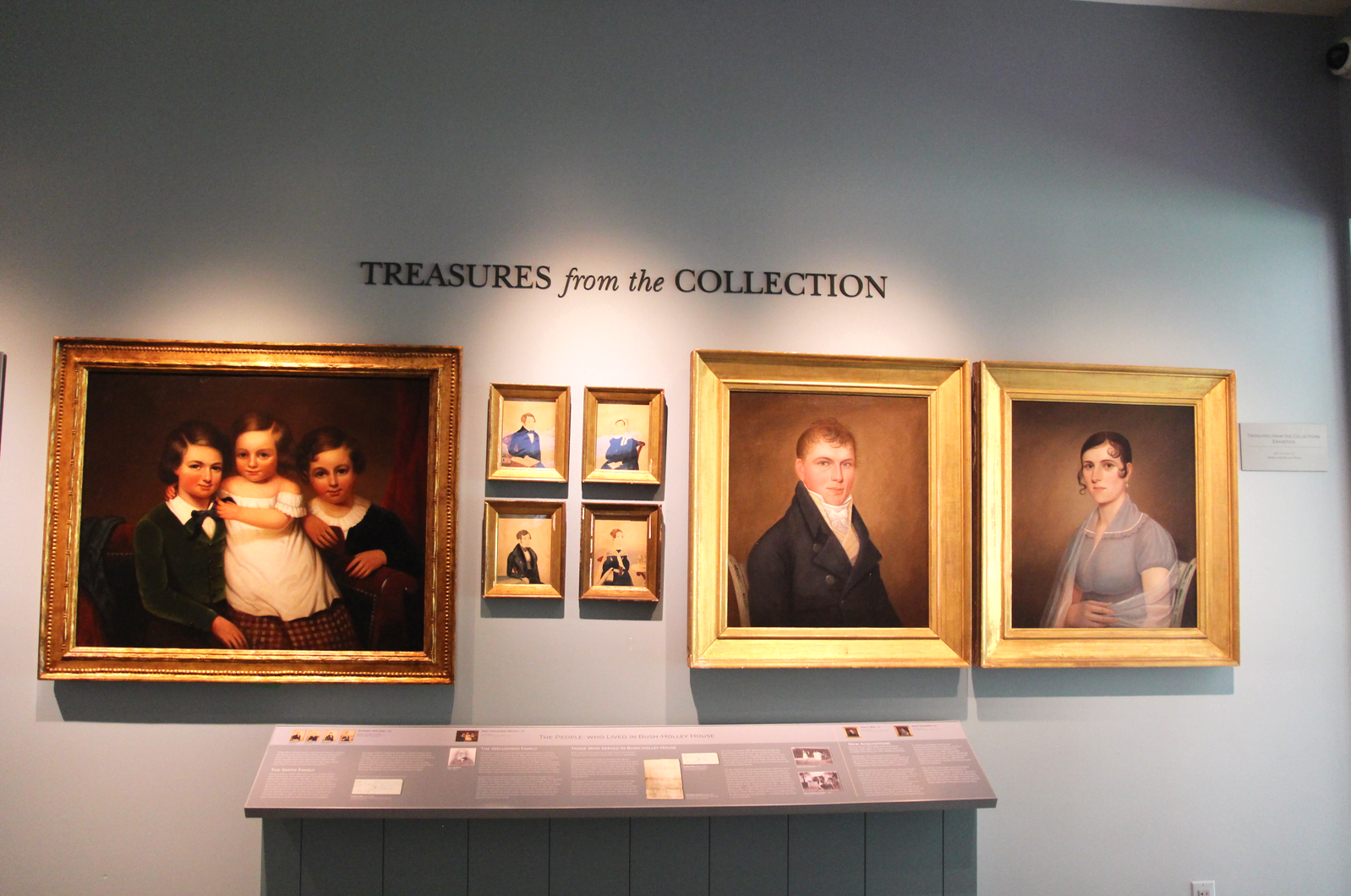
Items in the Permanent Collections Gallery on the second floor of the Historical Society’s museum. Photo: Leslie Yager

The permanent collections gallery features a timeline with postcards and photos including this 1950 photo of Woolworth’s which closed in 1995.

In the permanent collection gallery, a photo of toll booths on the Connecticut Turnpike which opened in 1958. Its construction caused the demolition of 229 buildings.
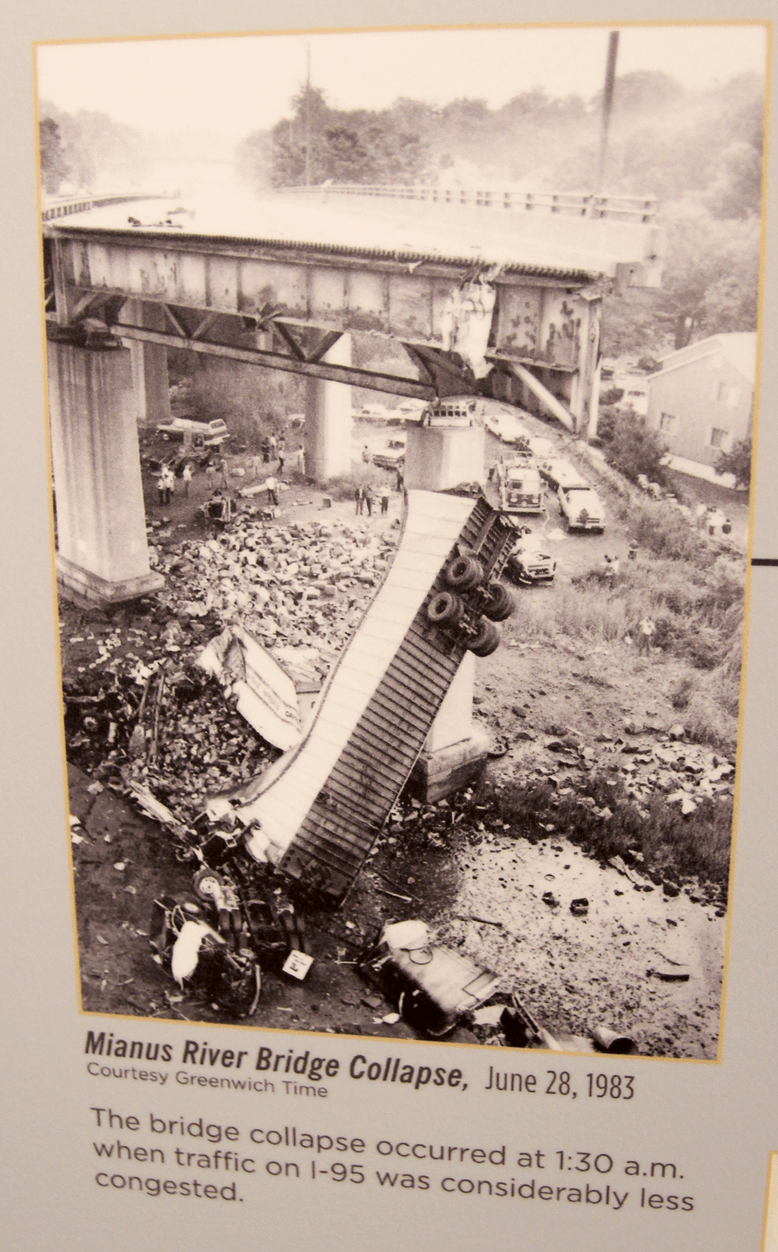
In the permanent collections gallery, a photo of the Mianus River Bridge Collapse, which took place around 1:30am on June 28, 1983 in the shadow of the Historical Society museum. For nine months, traffic was routed off I95 and through what is now the new parking lot of the Historical Society.
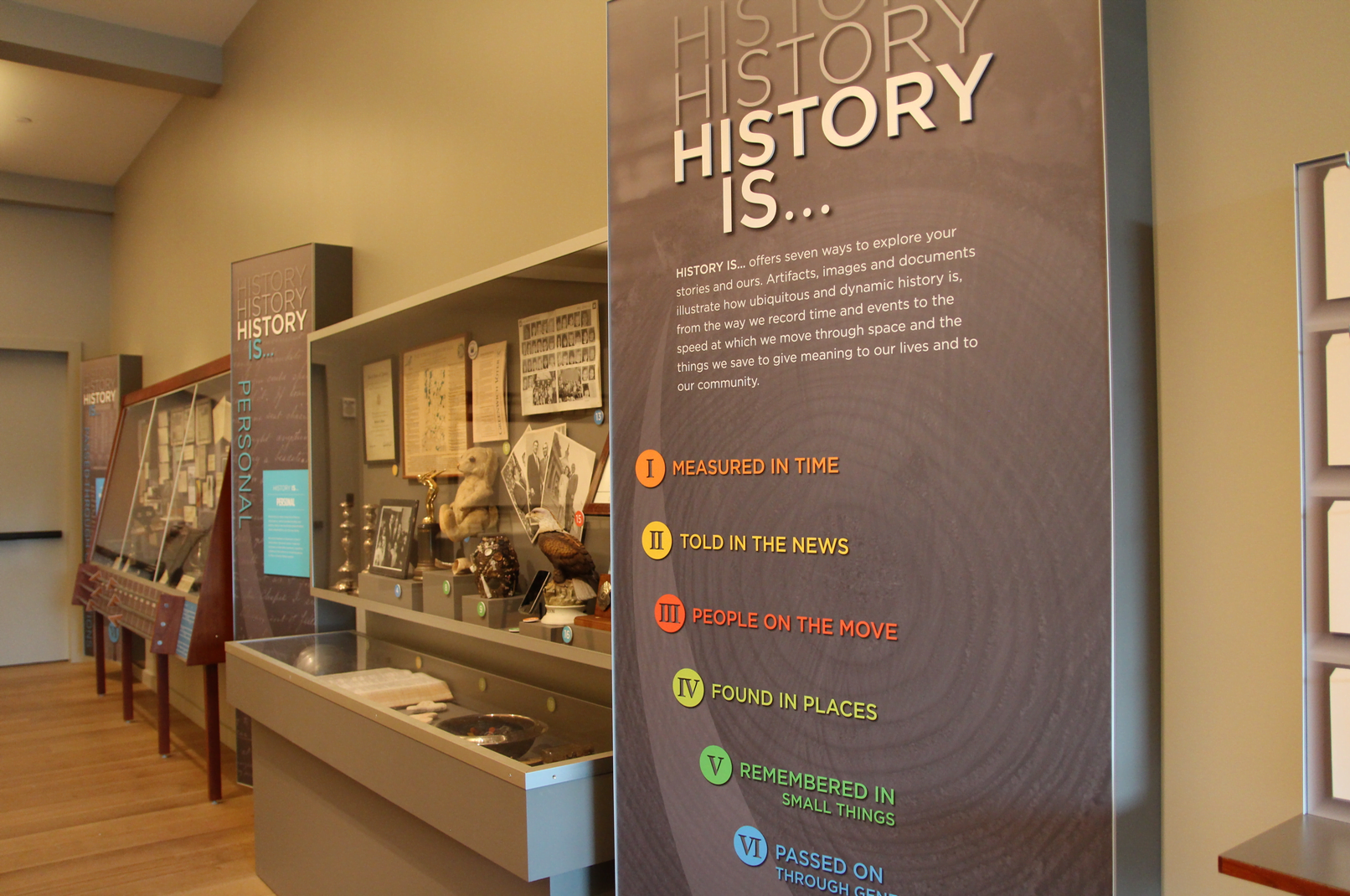
In the second floor Special Exhibitions Gallery, an exhibit “History Is” features multiple ways history is chronicled, including as measured in time, told in the news, changes in mobility, found in places, remembered in small things, and passed on through generations. Photo: Leslie Yager
The “History Is… ” exhibit encourages visitors to think about the role of history during different stages in their lives.
History isn’t comprised just of famous individuals or events. It can also be personal and reflect what is meaningful to people and their families.
For this exhibit, Greenwich residents loaned small artifacts, documents and/or images that illustrate memorable experiences in their lives.
The exhibition will be on display from October 6, 2018 through September 7, 2019.
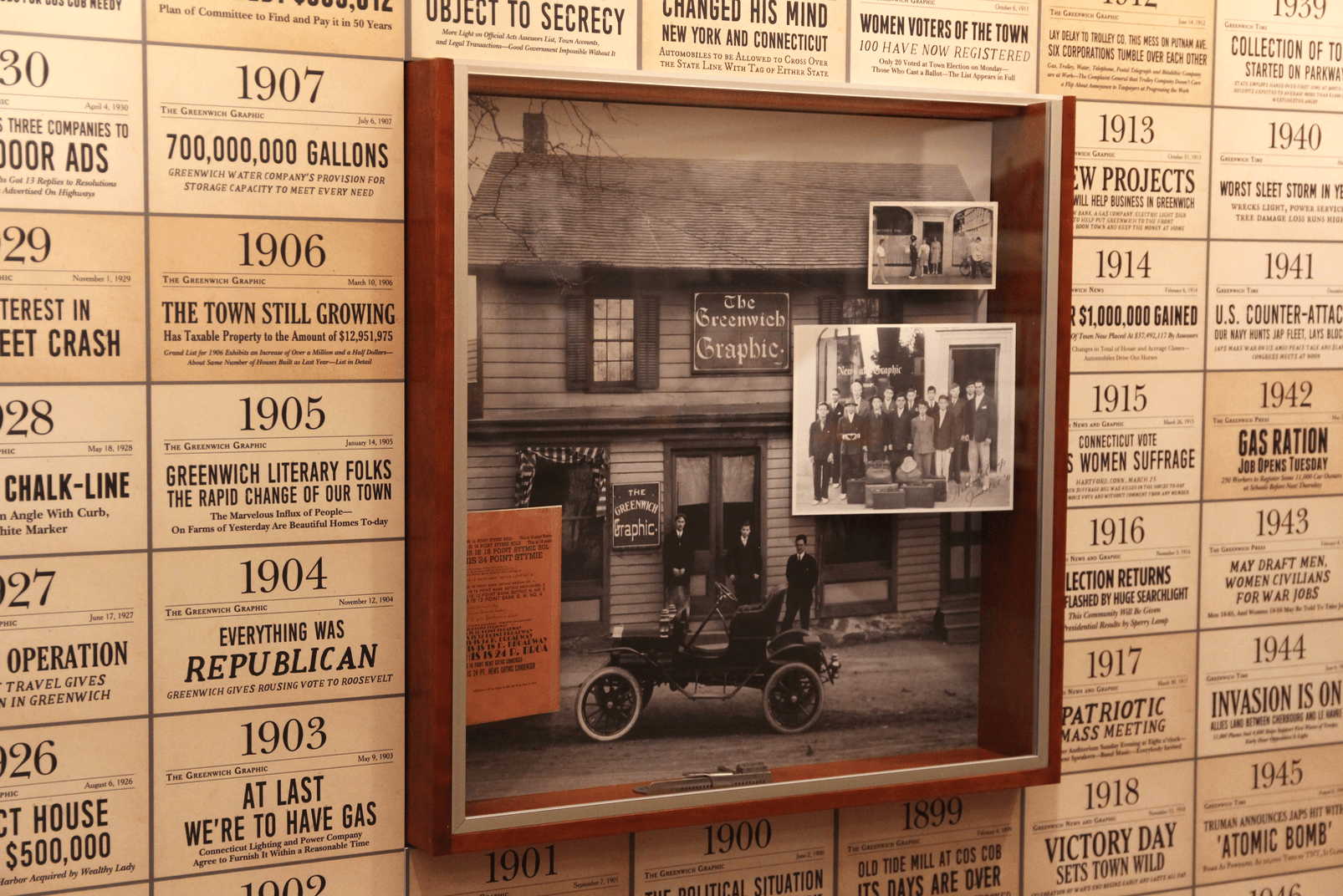
History can be traced through news features and headlines, which are part of the special exhibition running through next September, 2019. The Greenwich News and Graphic was the paper of record around the turn of the last century. During the Great Depression, Greenwich’s Lou Caravella walked up and down Greenwich Avenue selling paper for 3¢ a copy.
A timeline of headlines allows guests to see the breaking news in the year of their birth. Pulled from local newspapers, headlines are about events that had both national and local impact.
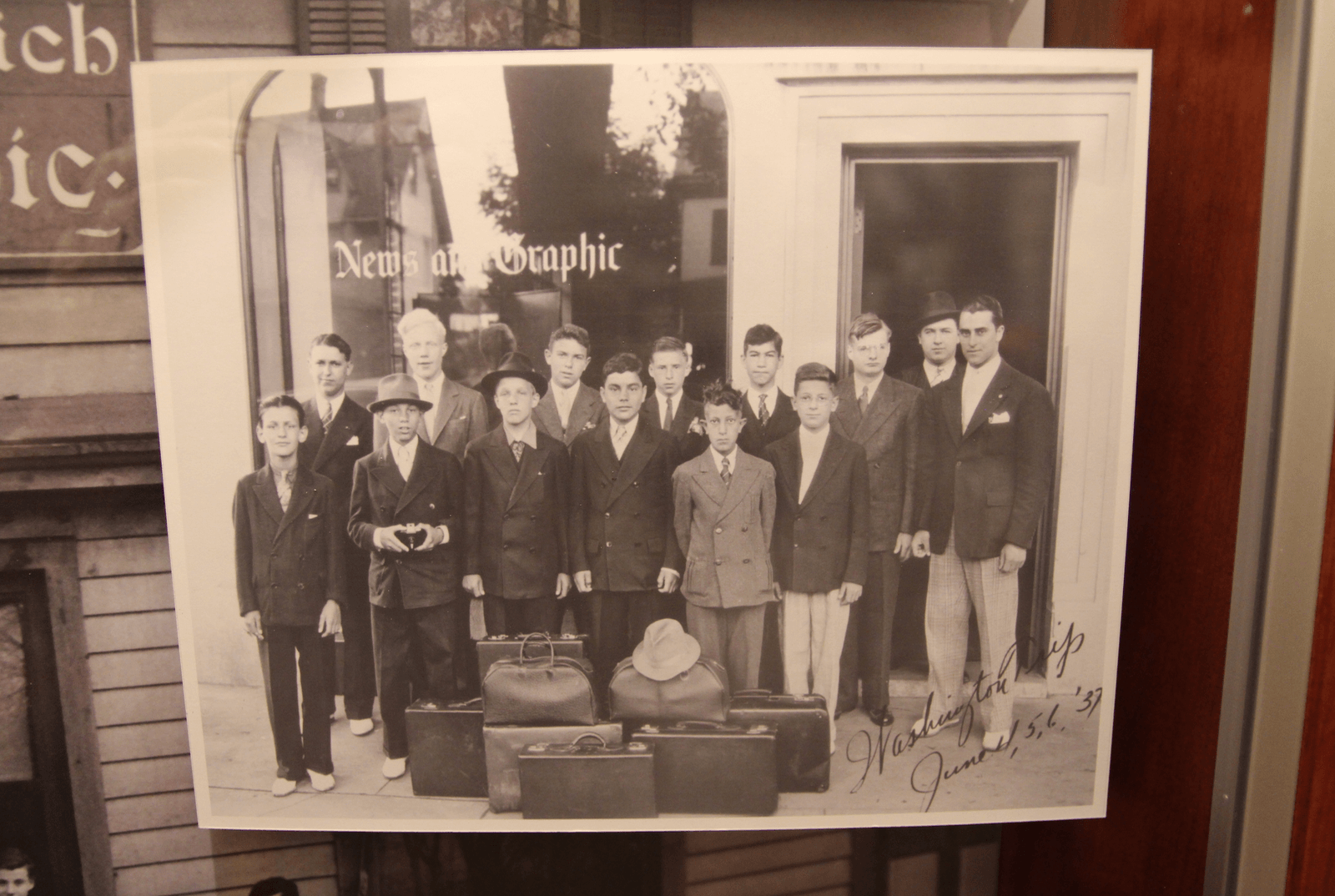
Photo of paper boys for the Greenwich News & Graphic around 1933.
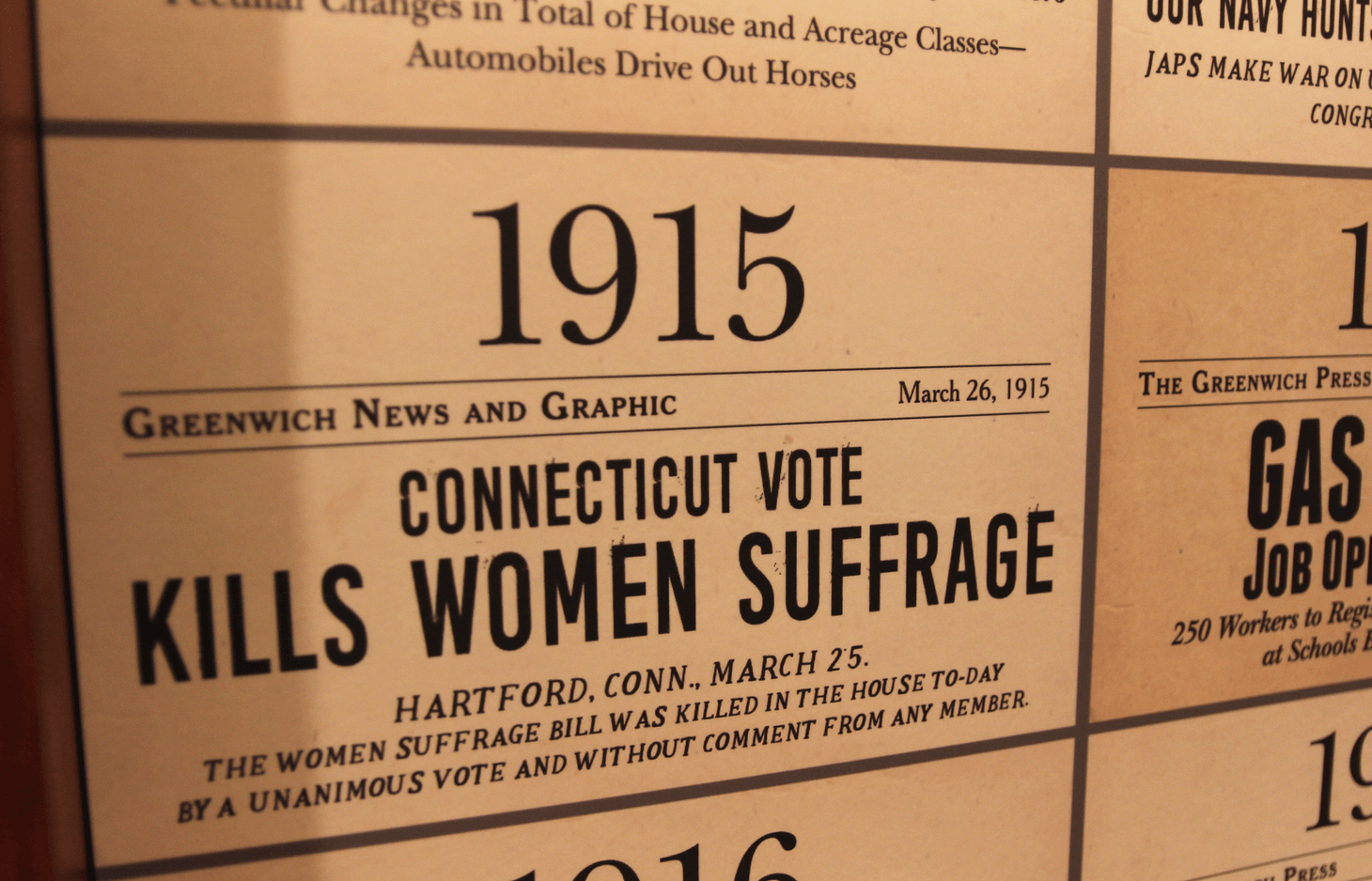
1915 headline from the Greenwich News and Graphic.

History can be chronicled through advances in transportation from horse and buggy to the invention of the pneumatic tire making possible the bicycle, and more recently the train and automobile.
The exhibit explores stories of people on the move over time, whether by foot, water, road or rail.
Modes of transportation and mobility have changed over time, impacting how people commute to work, as well as where they live and how new immigrants arrived.
This exhibit offers a glimpse into how the town of Greenwich changed over time as modes of mobility evolved.
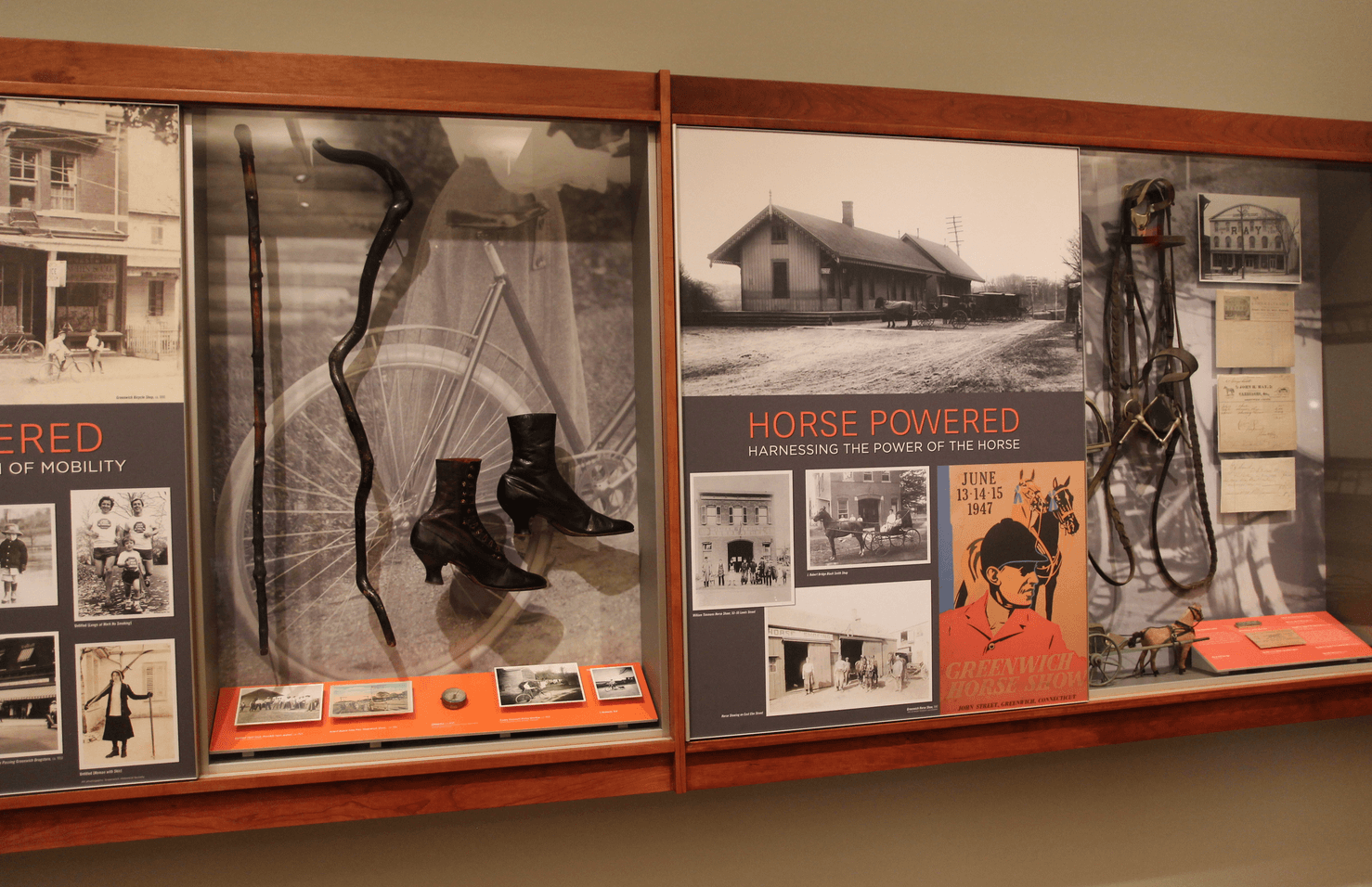
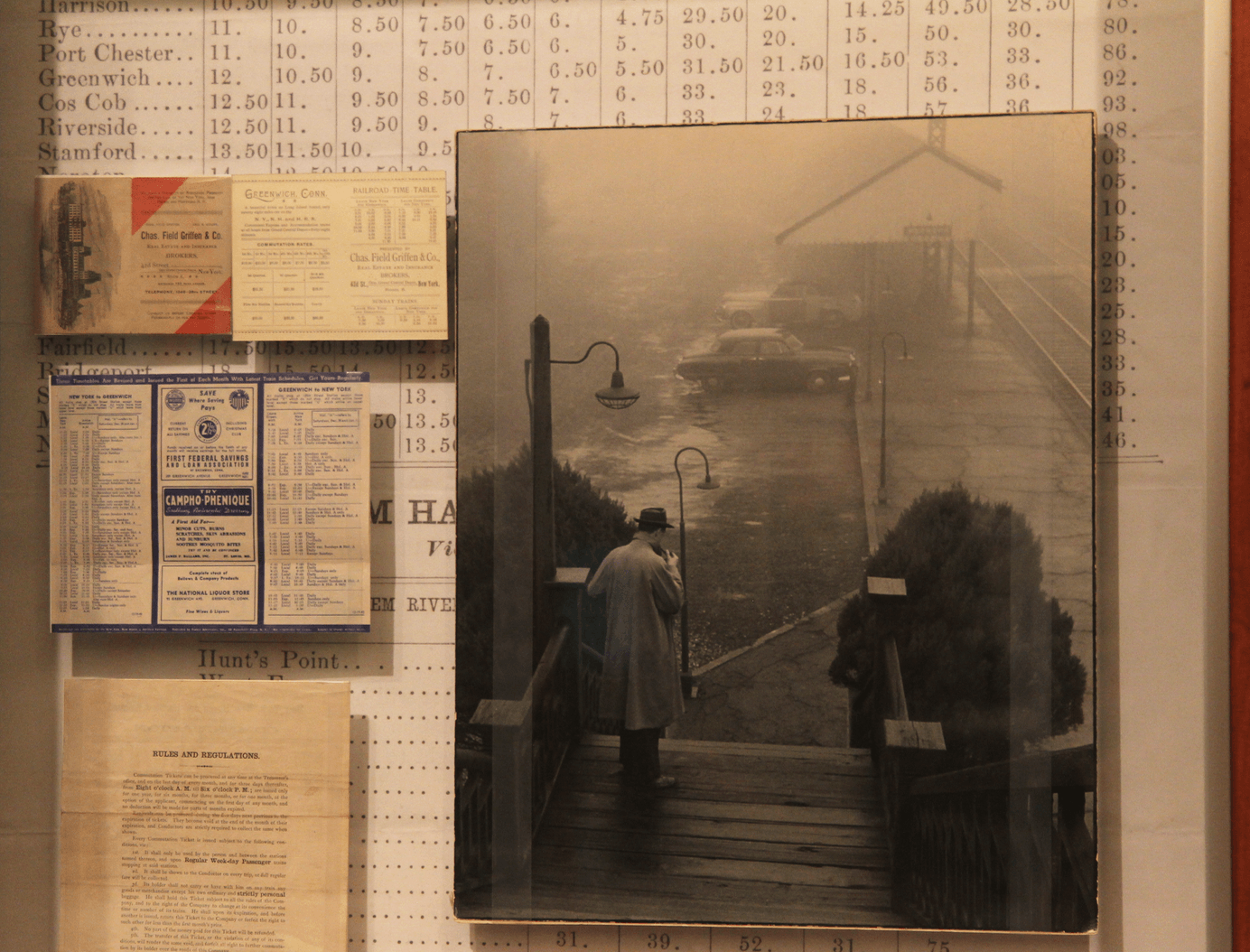
Greenwich’s population surged when it could be reached by regular railroad service from New York City. Over time, more and more workers lived in Greenwich and commuted by train to Grand Central Station.

A 1910 post card of Greenwich Avenue is part of the History Is… exhibition which will run through early September 2019.
A view of historic Greenwich through the Historical Society’s post card collection tells the stories of select landmarks, buildings and streetscapes that have survived or adapted to change.
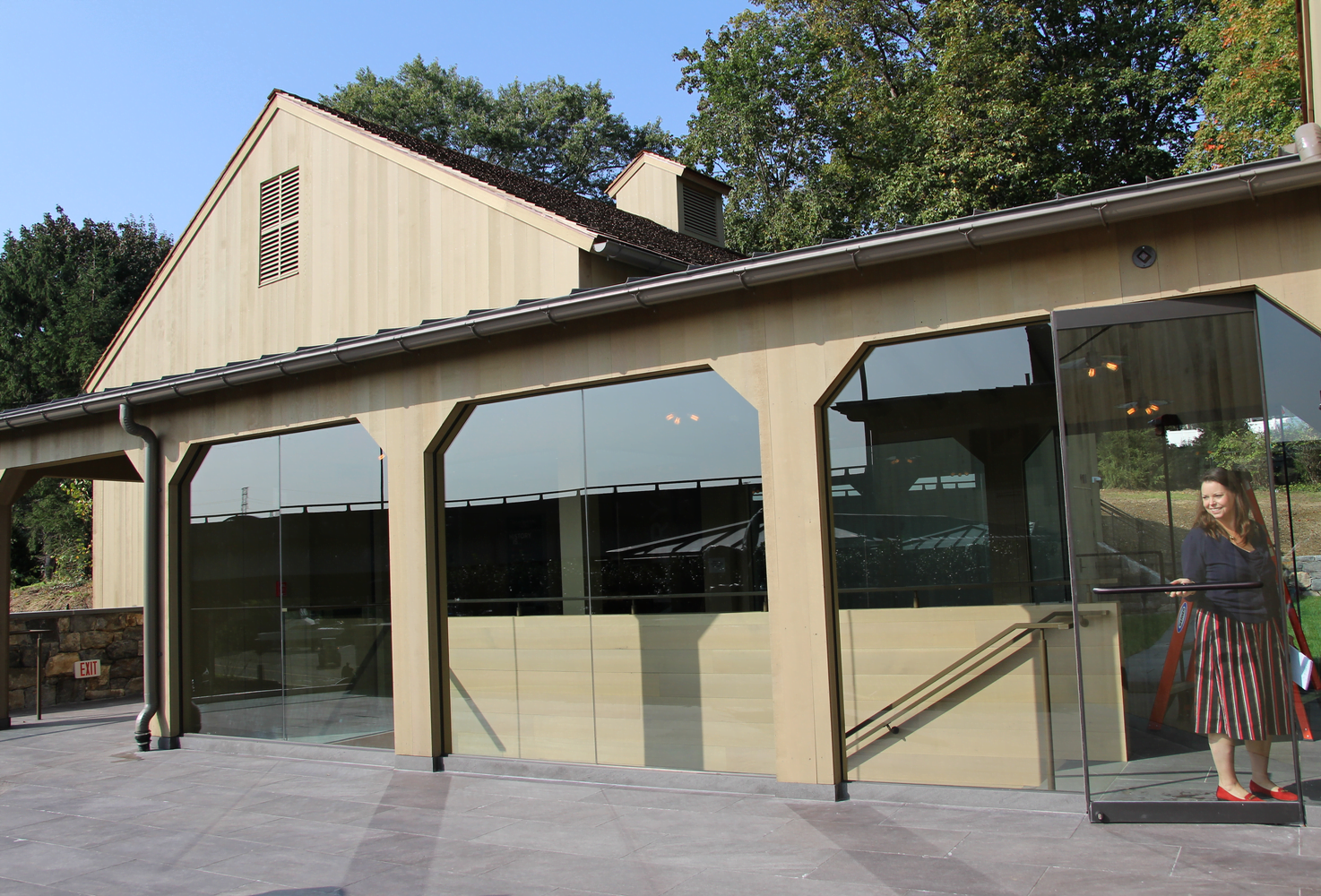
Between the permanent collections gallery and the special exhibition gallery is a foyer with access to a spacious roof terrace.
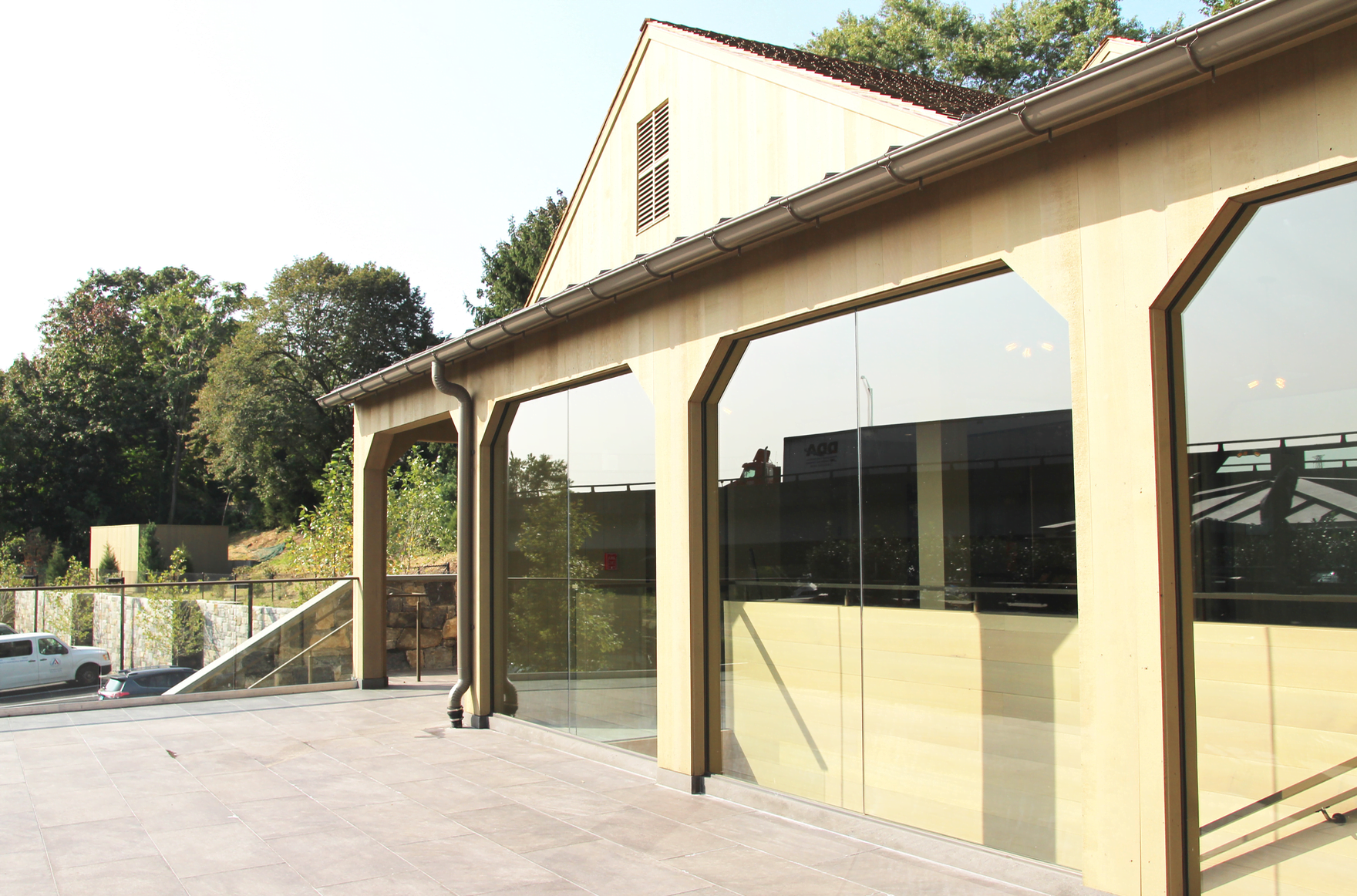
Note the reflection of the truck on I95 where it passes over the Mianus River.
While history is often comprised of famous individuals or events, recorded privately and publicly, history can also be personal. The Historical Society invited Greenwich residents to lend a small artifact, document or image that illustrates a memorable experience, something collected or passed on from a friend or family member.
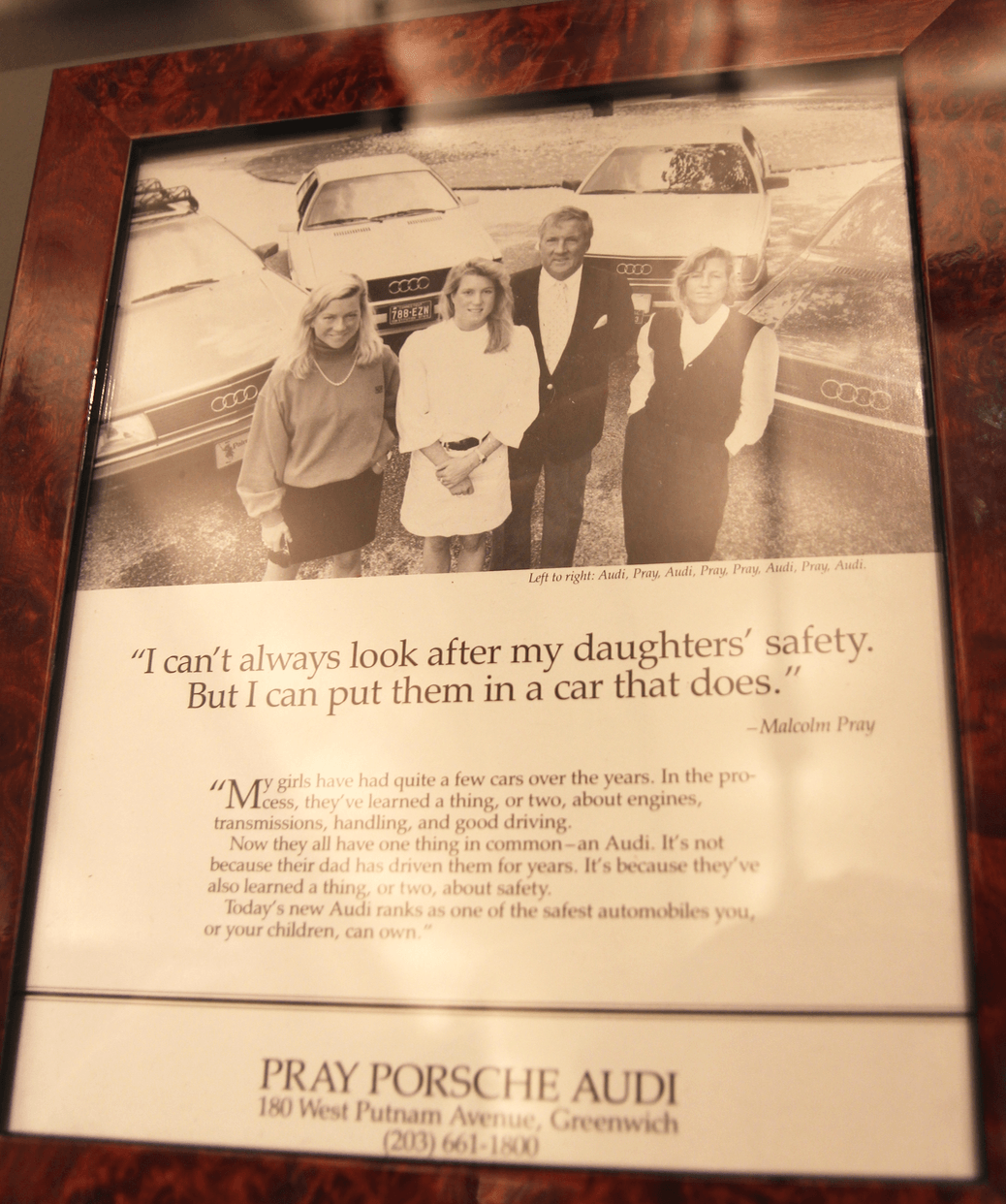
Among the “Remembered in Small Things” is a decades old advertisement for Pray Porsche Audi.
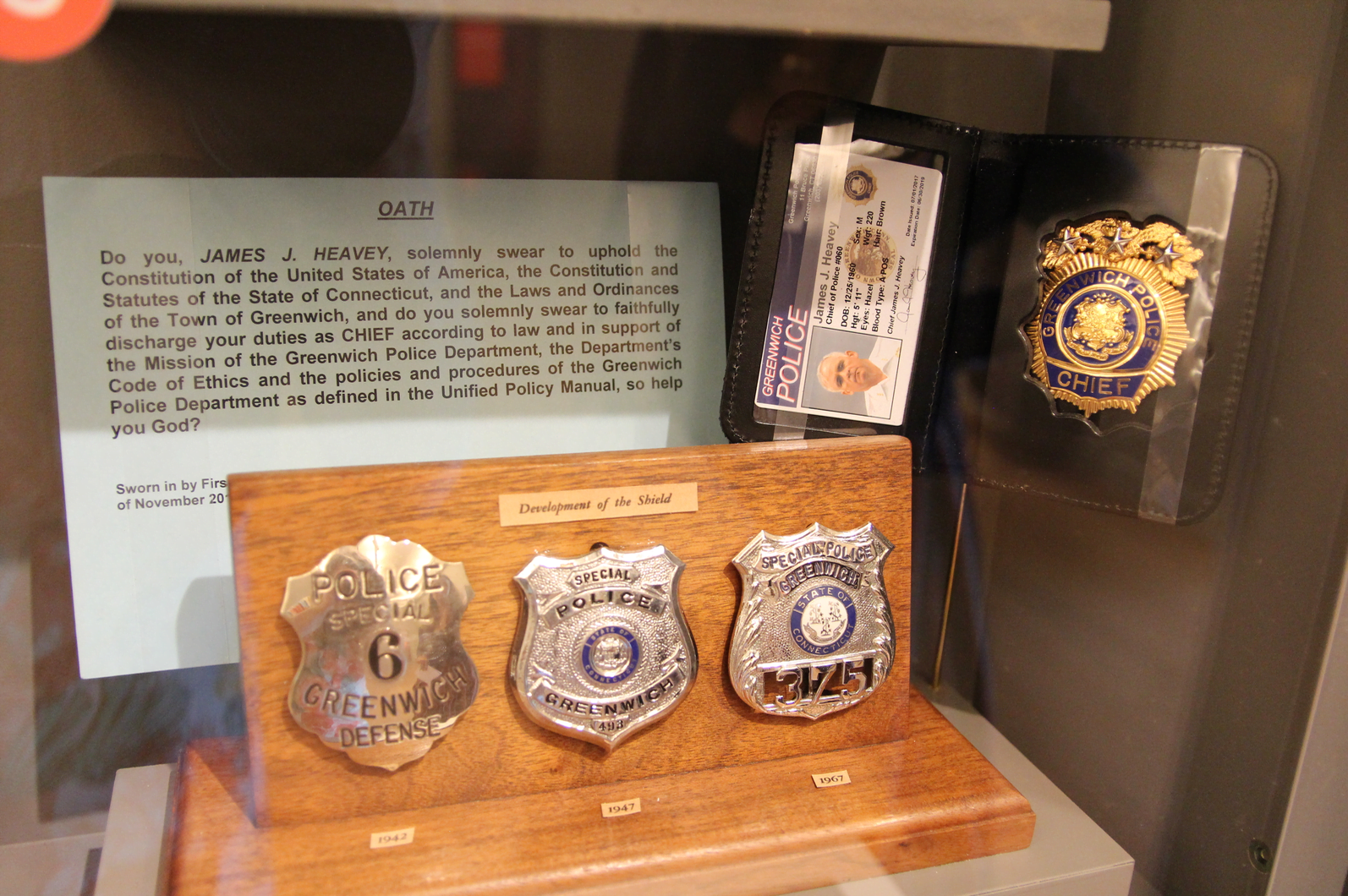
In the Special Exhibitions Gallery, “Remembered in Small Things,” items include those contributed by Greenwich Police Chief Heavey that show the development of the Greenwich Police shield.
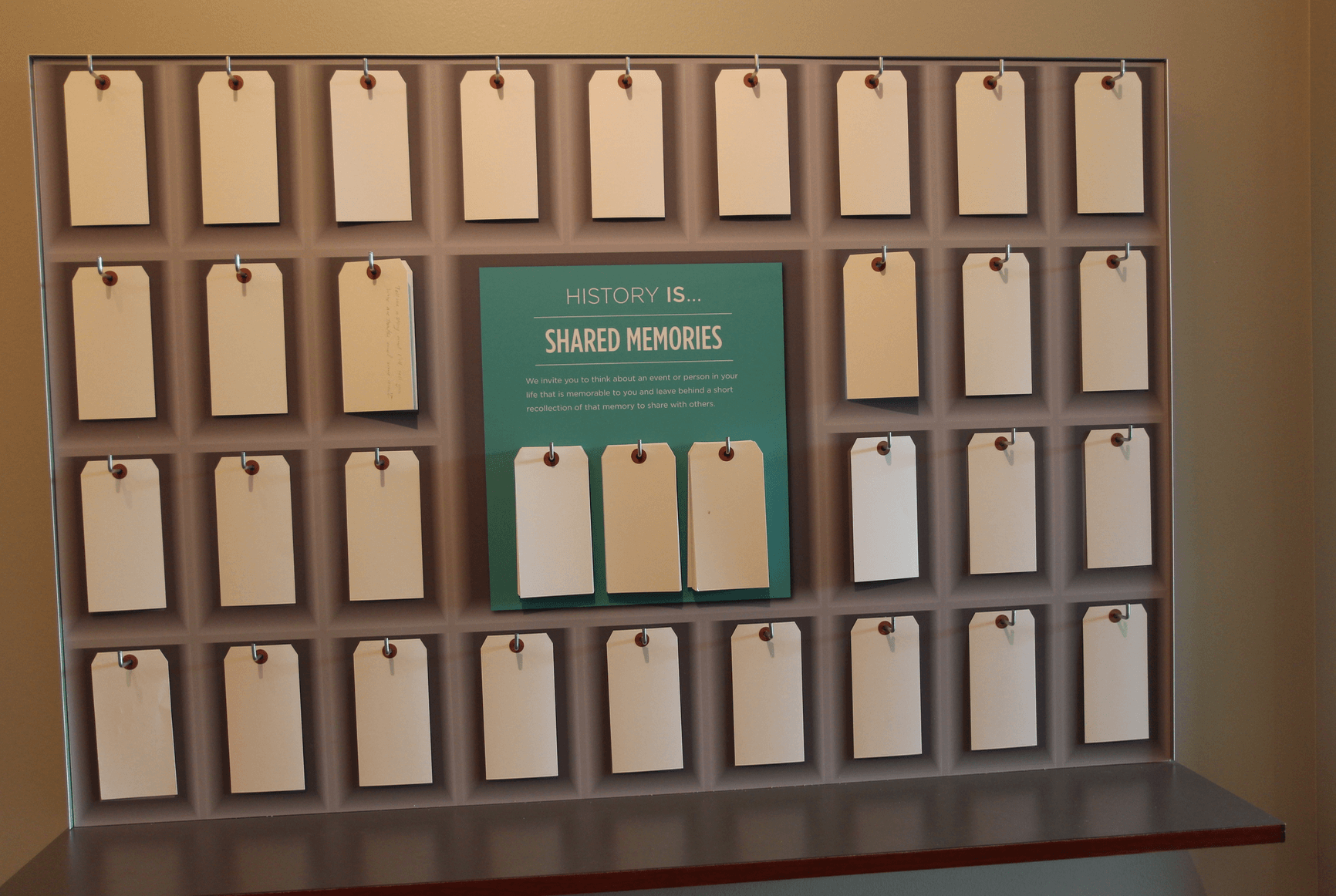
In the Special Exhibitions Gallery “History Is” exhibit, there is a comment board that invites guests to share a memory of an event or person.

View from the grape arbor of the museum galleries, Toby’s Tavern Building and storehouse. Photo: Leslie Yager
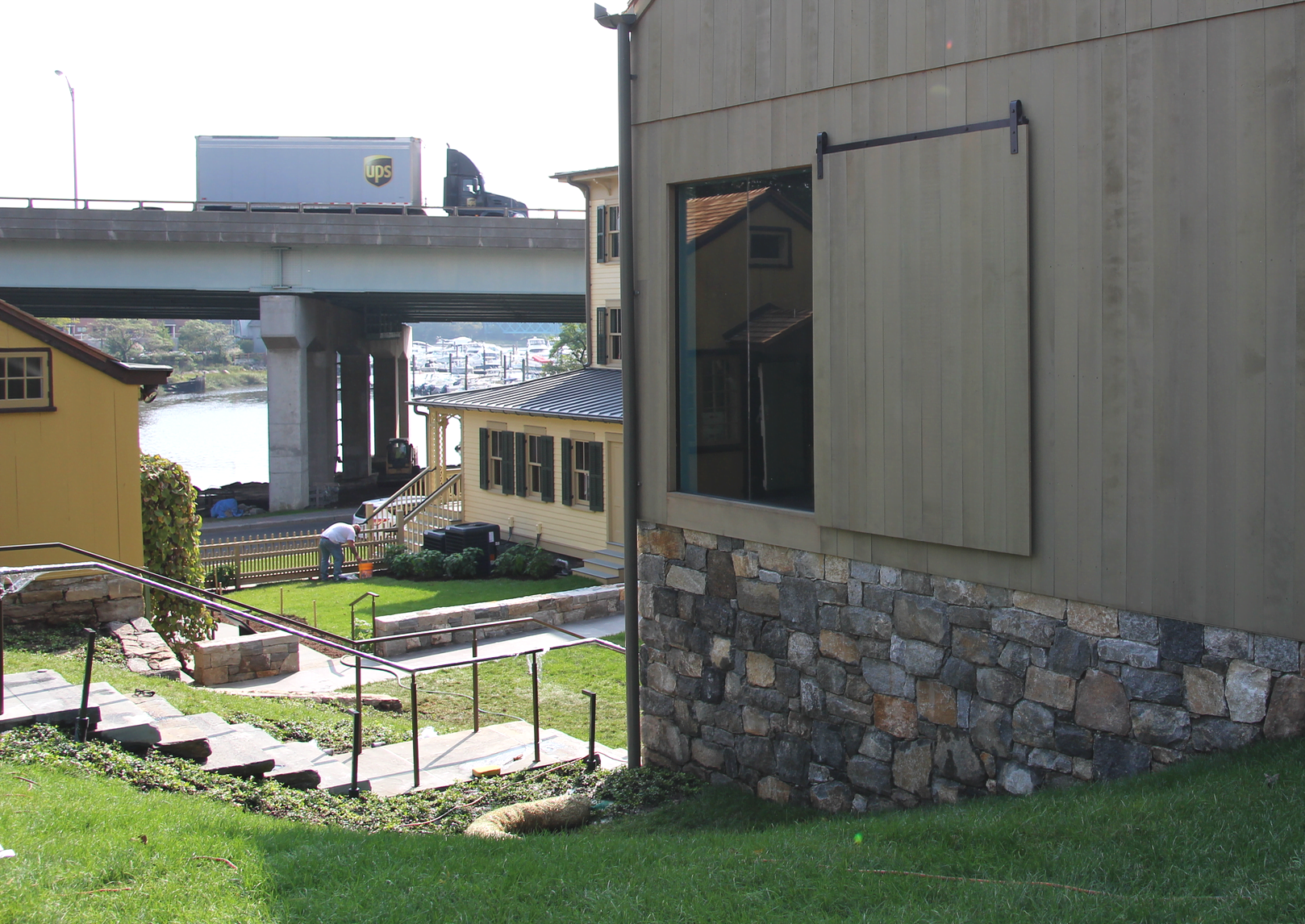
View from outside the museum galleries past the storehouse, Toby’s Tavern Building to I-95 and the Mianus River. Photo: Leslie Yager

View of the side of the Bush-Holley House from the museum building. Photo: Leslie Yager
Greenwich Historical Society was founded in 1931 in Greenwich, Connecticut to preserve and interpret Greenwich history to strengthen the community’s connection to our past, to each other and to our future.
The circa 1730 National Historic Landmark Bush-Holley House, which was built as a home for prosperous merchants and later gained recognition as the site of the first American Impressionist art colony in Connecticut, is open to the public as a museum.
The dynamic campus transformation will accommodate more visitors, allow the display of more of our collections, and enrich education and preservation programs to better share the fascinating stories and national significance of this pivotal New York City suburb.
The Greenwich Historical Society is located at 47 Strickland Rd in Cos Cob.